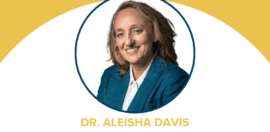Three Key Challenges in Creating Community Impact
15 April 2014 at 11:45 am
Creating Community Impact is achievable with some hard work, writes Executive Director and CEO of United Way Australia, Doug Taylor.
It’s not that often that I am able to hang out with my United Way colleagues in the US (as they say, “it’s a long ass way to Australia”).
When I do catch up with them I go into questioning overdrive as I try to extract as many insights as possible that will help the work of United Way Australia and the communities we work with and for.
This was the case on a recent trip to the US that was ostensibly about our new global growth strategy but also a great opportunity to talk to local United Way leaders who are trailblazers in creating Community Impact.
Community Impact is how United Way talks about our collaborative work, like Collective Impact, it’s focused on improving lives by changing community population level outcomes through cross-sectoral collaboration, setting goals and focusing on results.
I had a pretty intense week of meetings, but in the midst of these I was able to talk to CEOs of United Ways in Miami, Salt Lake City, Phoenix, Cleveland, Boston, Denver and LA. These organisations are all major players in their community having revenue that ranges from $13 million to $70 million.
Despite their scale and their significant strategies (for example, in LA my colleague Elise has housed 4,500 people who are chronically homeless), the conversations I had with each of them focused on exactly the same challenges that are identified when I speak with local corporate, community and government leaders Down Under (yes, another affectionate Americanism).
I thought I’d share with you some of these common challenges we all face in this work and some possible solutions.
1. Forget the human element to this work at your peril
As scientific as we like to make all this work, it ultimately comes down to having the right people in the right roles. Or as Jim Collins says in “Good to great”, the right people in the bus in the right seats.
My colleagues stressed the tenuous nature of this work, one colleague commented to me “all that’s needed is the change in a School Principal or Board Chair and lots of hard work can be undone overnight”.
Their mitigation strategy is to ensure there are as many connections from key institutions into this work as possible.
In addition, it is building a grassroots networks of volunteers, parents and citizens as advocates.
In addition to having multiple key agencies involved, you must engage people beyond the key institutions and all people must be engaged as individuals at a deeper level and not just in their professional capacity.
This is a whole new literacy and skill for Collective Impact practitioners. In the last month I’ve seen many practitioners start meetings with conversations that get “professionals” and “clients” talking at deeper levels about their aspirations for themselves, their family and their community.
This can be uncomfortable but it’s critical for this work because of the insights it generates for more innovative strategies, the trust it builds to withstand the inevitable conflict of collaboration and the stickiness it creates with key stakeholders that are critical for sustaining this work.
Giving time to this is important; this work is a marathon not a sprint. For example, one colleague who was running a $6 million Collective Impact strategy to address secondary graduation rates told me that it took them one year to set goal and then one year to create the plan and develop data baselines and measures (this is comparable with our experience here). Without solid relationships the work won’t go the distance and will be wasted effort.
To find out more on various resources that can help build good relational foundations, check out Rich Harwood’s work on Turning Outward and the community organising movement’s “Relation Meetings” approach.
2. Who has the backbone to do this work?
United Way has historically been the funder to thousands of Not for Profit organisations in Australia and across the globe.
Steadily we’ve come to the realisation that whilst this does help individuals it doesn’t necessarily solve community problems and may even complicate things further by creating an array of disconnected and competing “projects”.
With our growing focus on creating community population level outcomes we’ve initially taken on the role of mobiliser to generate the necessary human and financial capital to support these new Collective Impact strategies.
For example my colleagues in Salt Lake City spent a few years influencing, educating, funding and equipping Not for Profits to play the role of a backbone to convene organisation in this work in local communities.
It didn’t work, principally because the Not for Profit partners were not able to make the transition from a programmatic mindset to that of a convenor.
The Not for Profits handed back this responsibility with considerable relief so that they could get back to their core capability of providing community services.
Clearly there were inherent challenges in stepping outside the competitive fray of local service delivery in a way that can bring agencies together to work together on a common strategy.
There were also some key skill sets missing in this work such as the data analysis, collaborating capability and strategy development.
The result? In the absence of others who are willing and able, United Ways will play this role themselves.
They do this with some misgivings and hope that the capability will develop in the sector and that alternative approaches, such as a “distributed backbone” will emerge.
One trend to watch out for over the coming year is the emergence of funders as backbones.
Like the United Way transition there are a number of risks in this but there are upsides in that they bring a degree of independence from a service delivery mindset and new resources to a function that is inherently difficult to fund. Which brings me to the next challenge that was a theme of my discussions – sustainability and scaling.
3. The inevitable questions about sustainability and scale
I often chuckle when I see strategic plans that have goals relating to the creation of more sustainable income (actually I think that could feature in our plan).
We have this sense that we need to get a strategy with a silver bullet to address our financial woes and that when we find that one thing there will be rivers of gold and that we will make money in our sleep.
I’ve been around long enough in the Not for Profit sector to know that this just doesn’t happen.
All income streams require work, there are peaks and troughs and lifecycles that seem to be getting shorter and shorter.
The development of an effective Economic Model for Collective and Community Impact is inherently challenging. I was surprised to hear this so consistently in the US where there is an enormous philanthropic community and my colleagues have significant amount of discretionary funds that they can allocate to these initiatives.
Given this, I think it’s cautionary for practitioners in Australia and should encourage us to explore innovative collaborative models such as ones with distributive backbone functions.
I spoke to a number of colleagues who we are looking at similar approaches in order to scale up their deep (and costly) work in their pilot communities.
Like the Ten20 Foundation in Australia my colleagues were advocating for “blended” Economic Models to mitigate the risks of over reliance on single revenue streams.
They have had to get much better at communicating this complex work to divergent audiences.
For example in Salt Lake City the local United Way draws income from individuals in workplaces, special community events, High Net Worth individuals and most recently a Social Impact Bond from the State Government and an Investment Bank.
Cobbling together this mix of funding is not easy and requires some expertise and the ability for organisations to traverse typically separate income streams. We are grappling with this at United Way and at times it feels like those street performers that can juggle a cat, chainsaw and microwave oven.
We all need to get better at this and find partners to walk this long road.
About the author: As CEO of United Way Australia Doug Taylor is focused on creating and developing its Community Impact strategy, which addresses the education, income and health needs of local communities. He’s currently a member of the United Way Worldwide membership accountability committee and is responsible for the organisation’s Asia Pacific corporate development strategy. He is active in the broader community sector through Emerging Leaders for Social Change and has sat on the Commonwealth’s Volunteer Policy Advisory Groups.







